| Home > Robots > HAZARD > January | |
| January | |

|
I don't even know what this is! This sort of thing ain't my bag, baby! |
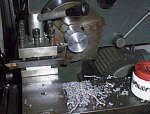 |
We're reusing the Colson Caster wheels from the Agamemnon on this robot but with some cool aluminum hubs. I turned them on the lathe and Tony broached them for a 1/2" drive shaft. | 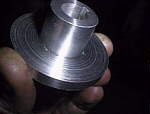 |
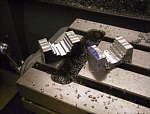 |
Tony supplied the drive motors which are extracted from Dewalt power drills. Since we lack the keen yellow and black plastic shell I had to machine up some alumimum mounting brackets. I use a coarse end mill to get the part dimensionally close (the stepped appearance) and then finish it off with the boring bar. |
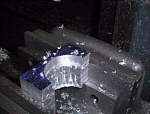 |
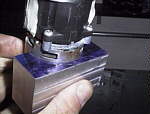 |
A perfect fit on the motor! The output of the planetary gearbox couples to a shaft supported by a custom bearing block to deal with the overhung wheel. Like most everything else the bearing block was machined out of a cube of 6061 aluminum. |
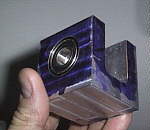 |
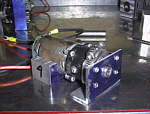 |
The mounted motor. The output spline required a clever part to be created that would be strong and not twist under the load of this high-impact robot (see below.) | |
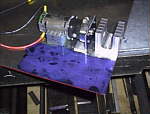 |
The base plate is sheared from a giant sheet of 7075 aluminum; very stiff. Holes for the bearing block and motor mounts were scribed and then drilled on the mill. | 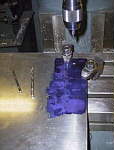 |